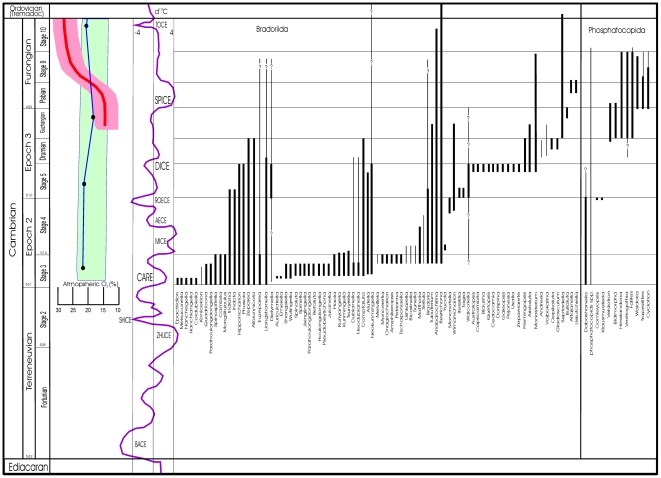Figure 4. Temporal distribution of Cambrian arthropods conventionally assigned to the Bradoriida and Phosphatocopida.
Bradoriid ranges are compiled from [57], [71], [72], [78] and references therein, representing a global dataset. Thick lines indicate definite ranges, whilst thin lines represent a questionable or imprecisely defined range. Only data from [46] and [71] are used to reconstruct the ranges of Bradoriida from China. The phosphatocopid data are from China [46], [77], Britain [43], Scandinavia and north Germany [13], [56], [63], [73], [79], [80], [81], [82], [83]: phosphatocopids are also known from the Antarctic [74], North America [66], Australia [84] and Kazakhstan [75]. The Borregård Member of Bornholm (equivalent to the Exsulans Limestone) was originally identified as the oldest horizon in Scandinavia with the phosphatocopids Hesslandona, Vestrogothia, Bidimorpha and Falites [79]. The Borregård Member is equivalent to the P. gibbus Biozone of uppermost Stage 5 [47], [83]. However, later the same author [82, p. 887] referred the material of [79] to the ‘Andrarum Limestone Breccia’, a horizon equivalent to the P. forchhammeri Biozone. Accordingly, we take the lower ranges of these phosphatocopids as Guzhangian. Our range for Waldoria includes material referred to Falidoria in [82]. We plot genera as a proxy for species diversity. This is reasonable given that most bradoriid genera contain only between 1 and 3 species. Exceptions to this include Cambria, Liangshanella, Anabarochilina, Indiana and Hipponicharion. For phosphatocopids, a multitude of species are referred to Dabashanella, but most of these are synonyms of D. hemicyclica [46]. Later Cambrian phosphatocopids including Falites, Cyclotron, Hesslandona, Vestrogothia and Bidimorpha all contain more than 3 species [78], emphasising the diversity of Guzhangian and Pabian phosphatocopid assemblages. Also shown are the major Carbon Isotope Excursions (CIEs) after [58], and oxygen levels reconstructed from [3]. For the latter, the red line represents the oxygen reconstruction (with error shown in pink envelope) of [3] and the blue line [with error envelope] is the Berner reconstruction quoted therein. In the text and figures we use the terms ‘early’, ‘middle’ and ‘late’ Cambrian informally to denote Cambrian Series 1 and 2 combined, Series 3, and Series 4 respectively. Note that some authors [13] would tentatively include Epactridion, Dielymella, Liangshanella, Flemingopsis, Alutella, Oepikaluta and Gladioscutum in the Phosphatocopida. For morphological reasons outlined in [57] we include these taxa within the Bradoriida. Abbreviations for CIEs are: BAsal Cambrian Carbon isotope Excursion (BACE); ZHUjiaqing Carbon isotope Excursion (ZHUCE); SHIyantou Carbon isotope Excursion (SHICE); Cambrian Arthropod Radiation isotope Excursion (CARE); MIngxinsi Carbon Isotope Excursion (MICE); Archaeocyathid Extinction Carbon isotope Excursion (AECE); Redlichiid-Olenellid Extinction Carbon isotope Excursion (ROECE); Drumian Carbon isotope Excursion (DICE); StePtoean Carbon Isotope Excursion (SPICE); Top of Cambrian Excursion (TOCE).

